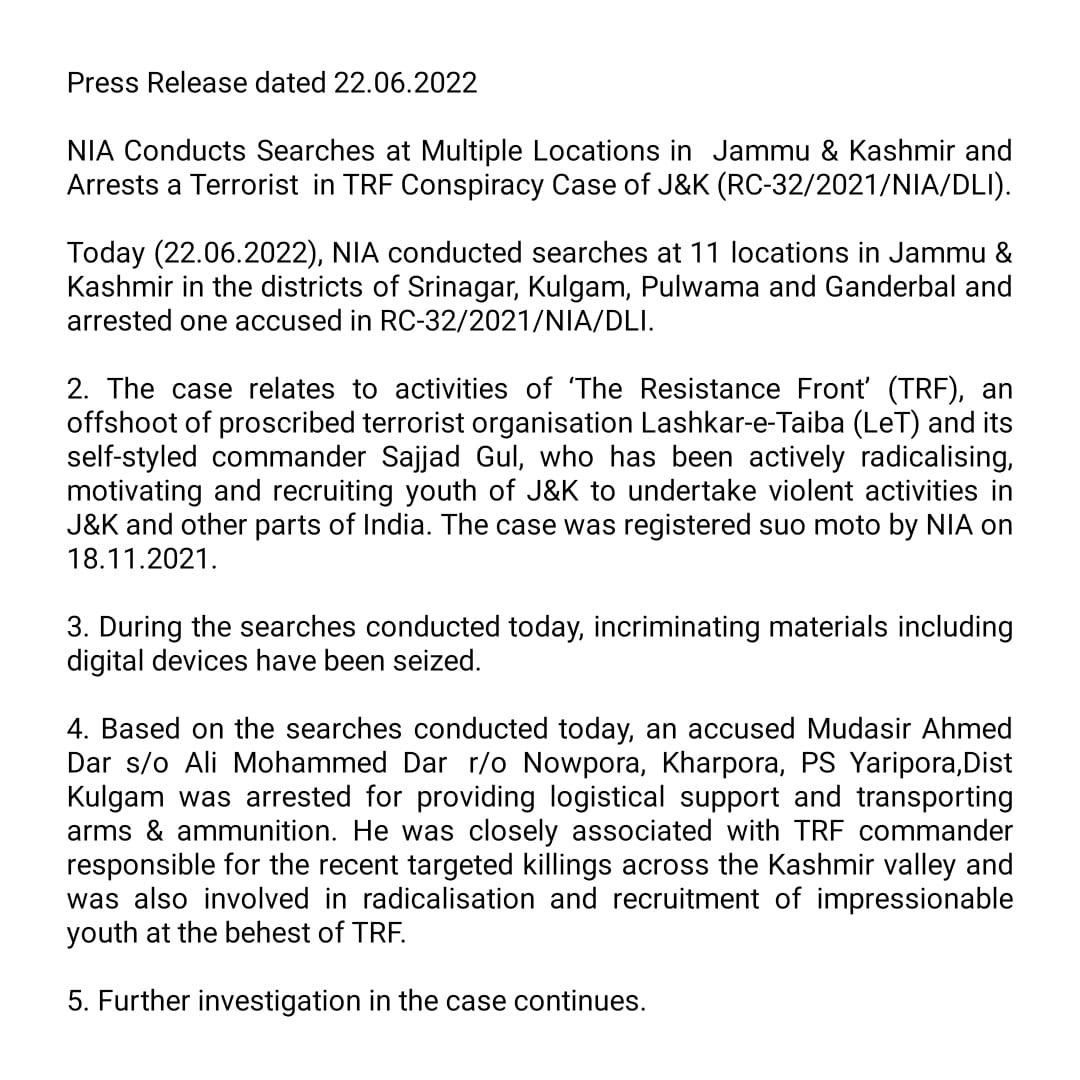
The attack took place on a convoy near the village of Gund in Ganderbal, targeting civilians traveling through the area. The perpetrators reportedly opened fire indiscriminately, leaving seven dead and several others injured. The TRF, which has been increasingly active in the Kashmir region, is believed to be behind this heinous act. LeT and its affiliates have long been implicated in orchestrating attacks on civilians and security forces, fueling unrest in the region.
NIA officers reached the crime scene shortly after the incident to begin their investigation. Preliminary evidence suggests that the attackers were well-equipped and had the support of handlers across the border in Pakistan. The NIA’s probe aims to establish the exact chain of command that facilitated this attack, as well as to identify the local operatives involved. The agency has been coordinating closely with the Jammu and Kashmir Police and other intelligence agencies to track down the culprits.
A significant focus of the investigation is on the TRF, a group that has emerged as one of the most active militant outfits in Kashmir. According to experts, TRF is being used by Lashkar-e-Taiba to circumvent international scrutiny and continue its operations despite being banned globally. The TRF has carried out numerous attacks in Kashmir over the past few years, targeting both civilians and military personnel. Its emergence has complicated the security situation in the region, adding another layer of challenge for security agencies.
The involvement of Pakistan-based handlers has also come under scrutiny. Investigations have revealed that LeT, operating under the guise of TRF, continues to receive significant logistical support from across the border. The NIA’s ongoing crackdown on cross-border terrorism has led to several arrests of key operatives in Kashmir, but the flow of arms, ammunition, and finances from Pakistan remains a critical problem. Just days before the Ganderbal attack, the agency had filed charges against four individuals, including a Pakistani handler, for their involvement in previous attacks in Kashmir.
The timing of the Ganderbal attack is alarming, as it coincides with a series of ongoing anti-terror operations in the region. Security forces have intensified counter-terrorism activities in Kashmir, with multiple encounters resulting in the neutralization of militant operatives. However, this attack shows that despite heightened vigilance, militant groups continue to find ways to strike, using sophisticated tactics and local recruits.
TRF’s rise is closely tied to the growing use of social media by militant groups. Both TRF and LeT have been actively recruiting youth through online platforms, tapping into local grievances to spread their extremist ideology. The NIA has flagged this as a worrying trend, noting that groups like TRF have been highly effective in radicalizing and recruiting young people in Kashmir. Online propaganda has become a key tool for these organizations, allowing them to bypass traditional recruitment methods and reach a wider audience.
The Ganderbal attack has reignited debates about India’s counter-terrorism strategy in Kashmir. Some security analysts argue that the government’s hardline approach has pushed more young Kashmiris toward militancy. Others point to Pakistan’s continued support for groups like LeT and TRF, asserting that cross-border terrorism remains the root cause of the violence in the region. The Indian government has repeatedly called on Pakistan to dismantle terrorist networks operating from its soil, but these demands have been met with little progress.
In response to the attack, security has been heightened across Jammu and Kashmir, with additional forces deployed to sensitive areas. Local authorities have also stepped up efforts to gather intelligence on TRF’s operations in the region. The NIA, meanwhile, continues its investigation, with further arrests likely in the coming days.
